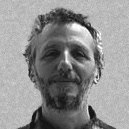
I was born in Portsmouth in 1974 and grew up between Italy and England—an experience that shaped how I see the world. My mother, Mary Rubick, was an English lecturer and translator; my father, Enzo Arnone, is a photographer who published a book about childhood, with words by Bruno Munar. Between them, I was surrounded by language and images.
I trained in Illustration at Falmouth College of Art, graduating in 2002. At Falmouth I deepened my love for picture books. I later worked as an animator on the BBC’s The Adventures of Abney and Teal, contributing to both the animated series and its companion books published by Walker Books.
Today, I live in Milan with my wife and our two sons.
I lecture in Storyboarding and Sequential Design at NABA (Nuova Accademia di Belle Arti), teach English at a private language school, and translate.
Drawing has been with me from the beginning. I had an easel and a never-ending roll of paper. I painted, splattered, smudged. Over time, the sky became a blue line across the top of the page. The grown-ups encouraged me to draw “how things really looked,” and slowly, drawing became something I wanted to master.
I remember one school day clearly: I was obsessed with an image in my head—an aerial view of a funfair. I wanted to draw it exactly as I imagined it: the rollercoaster, the structures, the movement of the rides. That moment felt like a turning point. I realised I didn’t just want to draw—I wanted to be good at drawing. I wanted to draw the best funfair in the world!
Please feel free to drop me a line at: darubick@icloud.com
